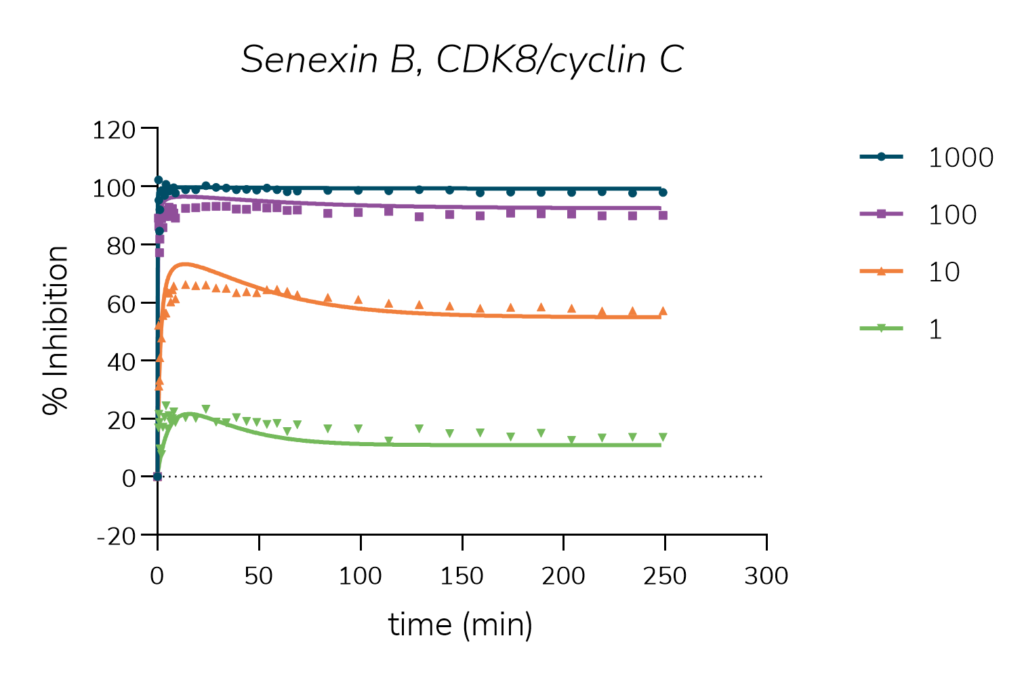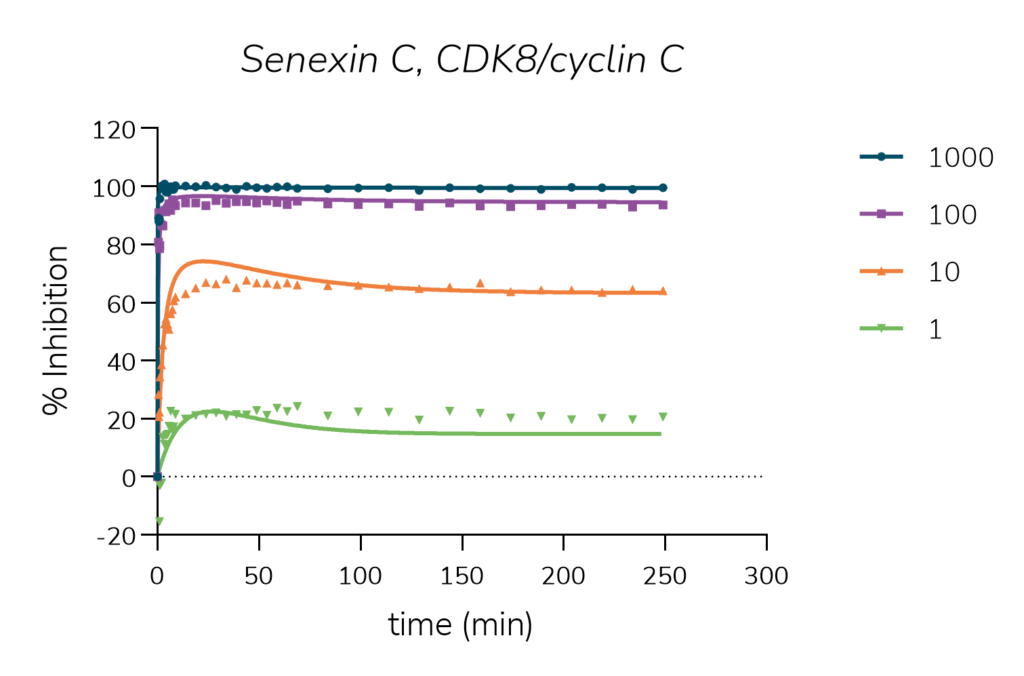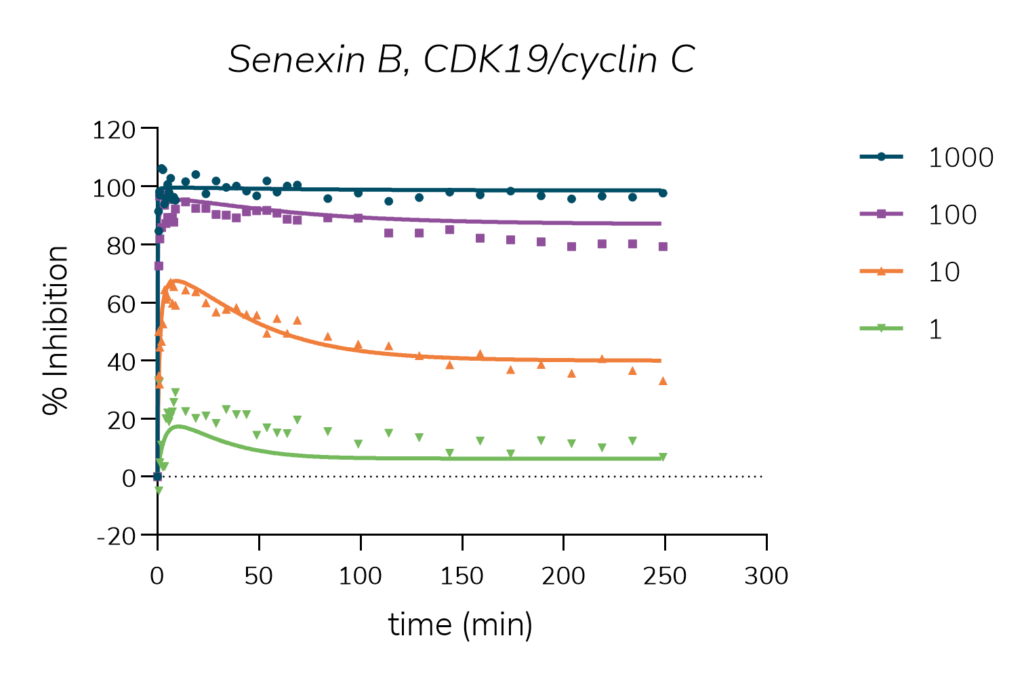Kinetic profiling using KINETICfinder® reveals differentiation between similar potential therapies
Senex Biotechnology, a drug discovery and development company focused on cancer therapeutics, used Enzymlogic’s patented KINETICfinder® platform to help identify a new class of quinoline-based Senexin derivatives with therapeutic potential.
KINETICfinder® is a high throughput kinetic platform that delivers kinetic data (kon, koff, kd and residence time) quickly and at scale:
- Enabling parallel SAR and SKR iteration.
- Helping to select the most promising compounds for progression.
- Promoting the understanding of PK/PD relationships.
Senexin C provides a sustained inhibition of CDK8/19 Mediator kinases
CDK8 and its paralog CDK19 are part of the Mediator complex, a large multiprotein assembly that plays pivotal roles in regulating transcription by RNA polymerase II. 1 Elevated expression of CDK8 or CDK19 has been reported in many cancers, including melanoma, colorectal, breast, prostate, gastric, and pancreatic cancers.
Senexin C is a further optimized Senexin B-related compound, the first selective CDK8/19 inhibitor to enter clinical trials for advanced ER-positive breast cancer. Although Senexin B was well-tolerated and resulted in the stabilization of metastases, it was found to be metabolically labile in humans.
- The kinetic profiling of Senexin B and C revealed that Senexin C has a slightly lower CDK8 Kd than Senexin B and similar CDK19 Kd to Senexin B.
- The residence time of Senexin C binding to CDK8 or CDK19 is 2−3 fold longer than that of Senexin B, suggesting a potential mechanism for the increased efficacy of Senexin C over Senexin B.
- Cell-based drug wash-off experiments indicated that CDK8/19 inhibition was far more durable after treatment with Senexin C relative to Senexin B, which is in agreement with the longer residence time of Senexin C.
Figure 1. Determination of binding kinetics of Senexin B and Senexin C to CDK8/Cyclin C and CDK19/cyclin C using KINETICfinder®.
| Target | Compound | On-rate (M-1s-1) | Residence time (min) | Kd (nM) |
| CDK8/cyclin C | Senexin B | 1.6×106 | 5 | 2 |
| CDK8/cyclin C | Senexin C | 8.8×105 | 14 | 1.4 |
| CDK19/cyclin C | Senexin B | 2.1×106 | 3 | 3 |
| CDK19/cyclin C | Senexin C | 9.4×105 | 6 | 2.9 |
Senexin C displays extended suppression of tumor markers
- A PK/PD analysis of Senexin C in a murine CT26 colon carcinoma tumor model confirmed sustained inhibition of PD marker genes as well enriched tumor tissue PK values.
- In contrast to Senexin C, Senexin B, administered to the same tumor model at the same dose, showed greater accumulation in blood than in the tumor and was less efficient in suppressing tumor-PD marker genes.
- An additional in vivo efficacy study of Senexin C (40 mg/kg, p.o., BID) in the MV4-11 acute myeloid leukemia model in female NSG mice showed that Senexin C strongly suppressed tumor growth with good tolerability.
References
- Zhang L. et al. (2022) A Selective and Orally Bioavailable Quinoline-6-Carbonitrile-Based Inhibitor of CDK8/19 Mediator Kinase with Tumor-Enriched Pharmacokinetics. J Med Chem. 24;65(4):3420-3433.



